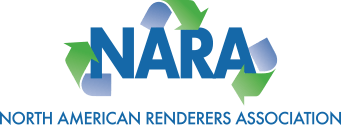We are excited to announce a newly published peer reviewed article, How Agricultural Rendering Supports Sustainability and Assists Livestock’s Ability to Contribute More Than Just Food, in the animal science journal, Animal Frontiers; Volume 11, issue 2.
The journal article covers the sustainability of agricultural rendering by outlining its benefits for each of the three pillars of sustainability (Environmental, Social and Economic). Additionally, the article discusses the many ways that rendered products surround us every day, as well as how rendering contributes to the livestock industry’s ability to provide more than just food for us to eat.
The article also takes a look at the rendering industry’s safety and regulation, and the makeup and types of animal protein meals and fats produced from the rendering process.
Also included are the many sustainable benefits of rendering (such as how rendering contributes to reduced food waste and water reclamation) and rendering’s key role in sustainable pet food. The article discusses the many products produced from rendering that people use regularly which wouldn’t even be available if it wasn’t for rendering!
Rendering diagrams, and educational rendering infographics are also included, plus new data about rendering, and the authors’ predictions and recommendations for the future of the rendering industry.
In a recent press release announcing the article, NARA and FPRF President and CEO, Nancy Foster had this to say:
“It is an honor to have this peer-reviewed article published, and for the rendering industry to be recognized by respected scientific experts for its many important contributions to sustainability. We are pleased that our research findings on the climate-smart and environmentally resilient benefits from rendering are now widely available for the public, policy makers, researchers, and industry professionals alike.”
The article was authored by Anna Wilkinson, Director of Communications for NARA and the Fats and Proteins Research Foundation (FPRF) with co-author David Meeker, Ph.D., Senior Vice President of Scientific Services for NARA and Technical Services Director of FPRF.
Read all about the positive impacts rendering has on sustainability in the article here
About Rendering
Rendering is a highly sustainable method of preventing and reducing food waste that has been practiced for centuries. Yet, agricultural rendering is not widely understood, nor is its highly valuable contribution to global sustainability discussed or generally recognized. The rendering process upcycles leftover, undesirable, or uneaten livestock and poultry meat (and used cooking oil) to safely and hygienically create new products so that nothing is wasted. In short: ‘rendering is recycling,’ and renderers are the ‘original recyclers.’
Roughly 50% of an animal is considered inedible by people who choose to eat meat. Rendering reclaims animal protein, bone, fat, and used cooking oil from restaurants that would otherwise be wasted and transforms it into approximately 31.4 billion pounds of fat, oil, and protein products each year. This rendered material is used in ingredients that produce new goods such as nutritious animal feed and pet food, biofuel, and many household and industrial products.
Rendering reduces carbon emissions by allowing huge volumes of animal leftovers and used cooking oil to be kept out of landfills. Rendering avoids at least 90% of potential greenhouse gas emissions (GHGs) compared with industrial composting and sequesters five times the amount of GHGs as it emits. In fact, as of 2020, rendering’s annual GHG reduction is equivalent to removing over 18.5 million cars from the road.
By reclaiming and converting animal leftovers and used cooking oil into ingredients for new products, rendering helps customers and consumers to be more sustainable. In addition to lowering GHGs, rendering generates clean water, reduces animal agriculture’s environmental footprint, and provides thousands of full-time jobs, many in rural areas.
For questions on the article contact corresponding author, Anna Wilkinson, at awilkinson@nara.org. To learn more about rendering visit www.NARA.org and www.fprf.org.

